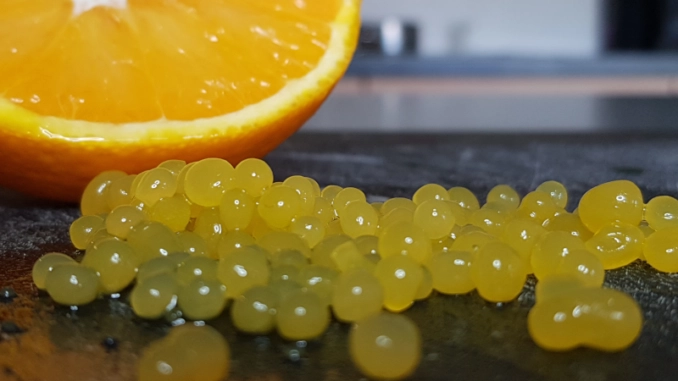
Use molecular chemistry to create foods with unexpected shapes. Do you think making orange juice beads is impossible? This is without counting on the properties of Agar, a natural molecule capable of gelling all liquids. Transform yourself into a molecular chemist to surprise your friends with your edible creations.
You will need:
- 4g of agar agar
- An orange
- 1 Oz sugar
- Vegetal oil
- A fruit squeezer
- A measuring jar
- A saucepan
- A plastic syringe
- A glass jar
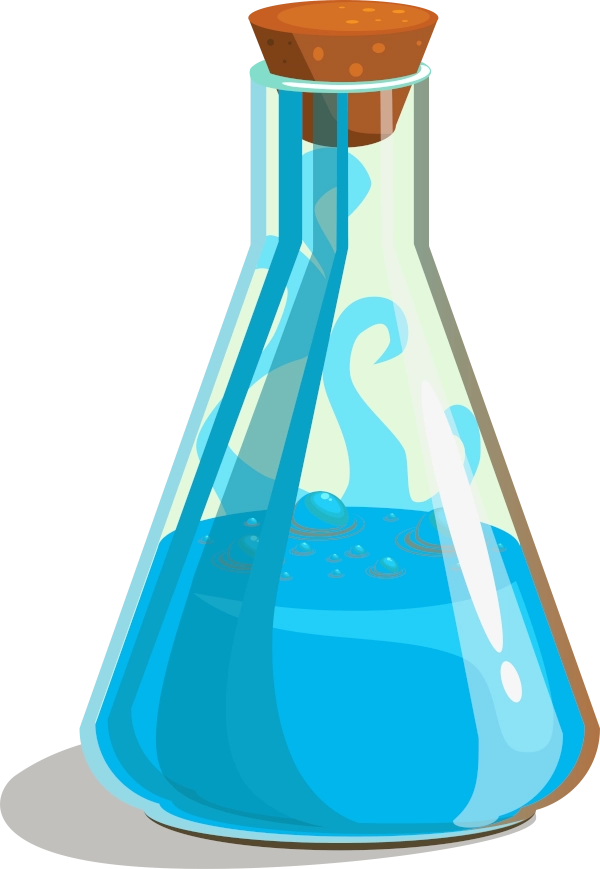
From 8 years old

Difficulty : difficult

This experience requires the help of an adult
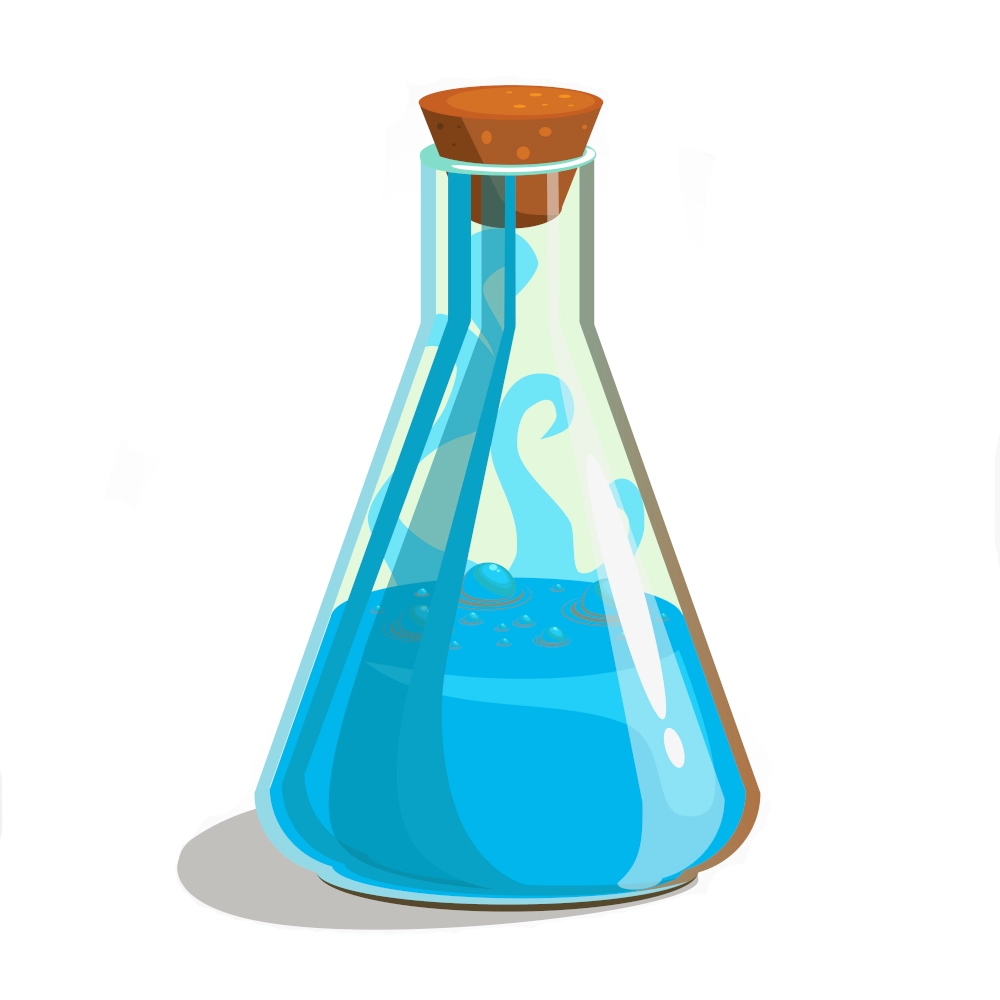
Let's experiment


Press an orange and collect 3,5 Oz.

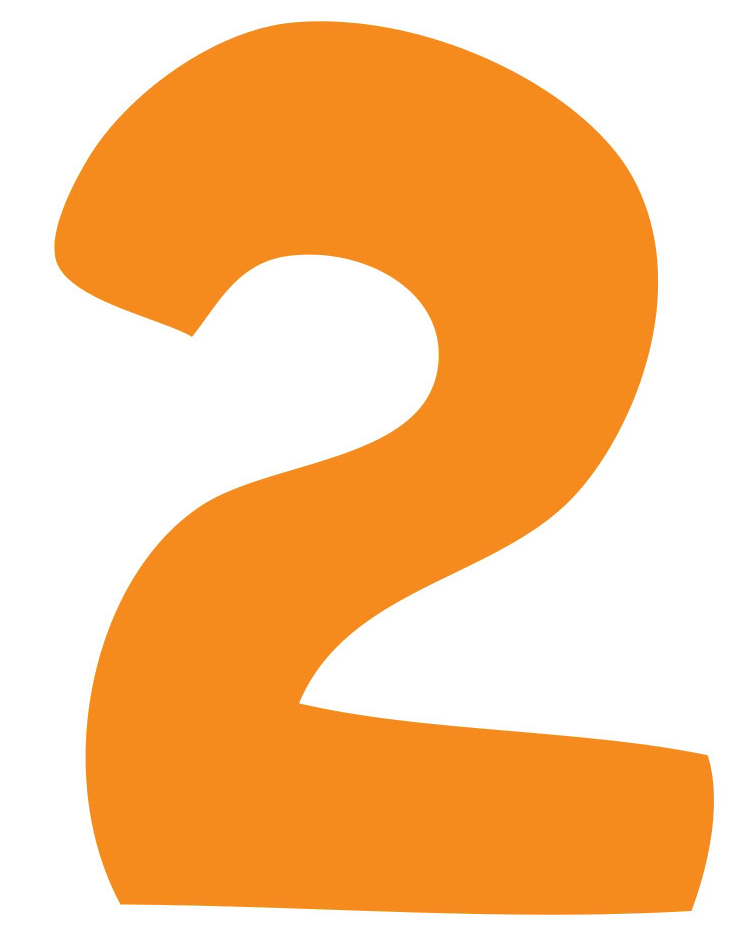
In a pan, add the orange juice, the sugar, and the Agar Agar. Mix well with a wooden spoon. Ask an adult to heat the pan and help you out with the next operations.
Heat the contents of the pan to the boil. Then turn off the cooking hobs.
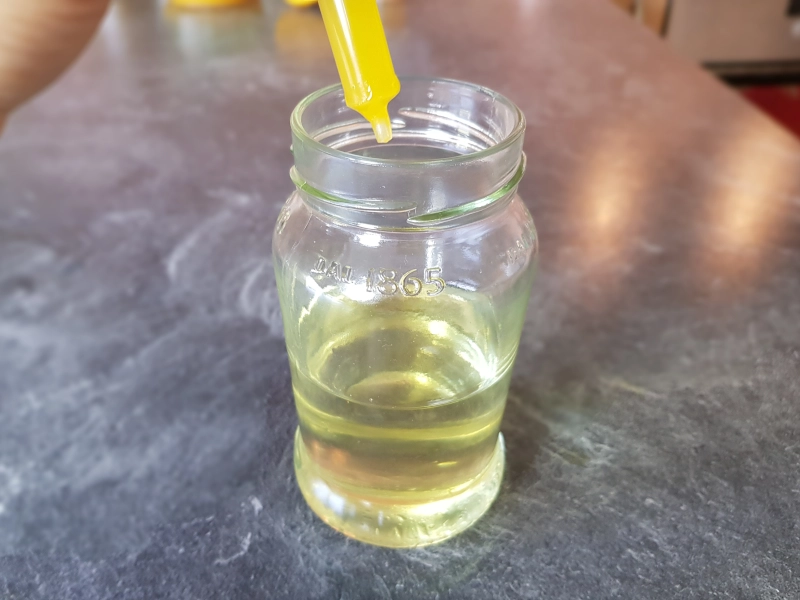

Using a plastic syringe, withdraw the mixture. Gently press the plunger to release drops into a jar filled with cold vegetable oil.

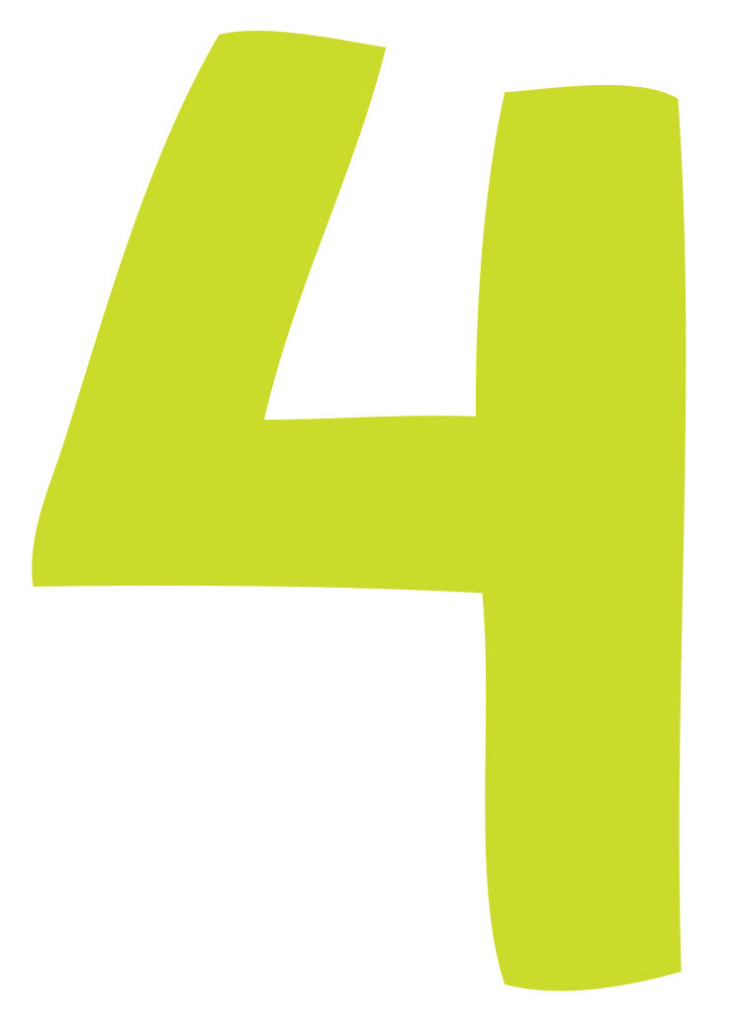
Continue the process gently, targetting different spots on the surface of the oil.


Orange juice droplets form and fall to the bottom.


When you’re done, collect your orange caviar by straining the oil through a sieve.
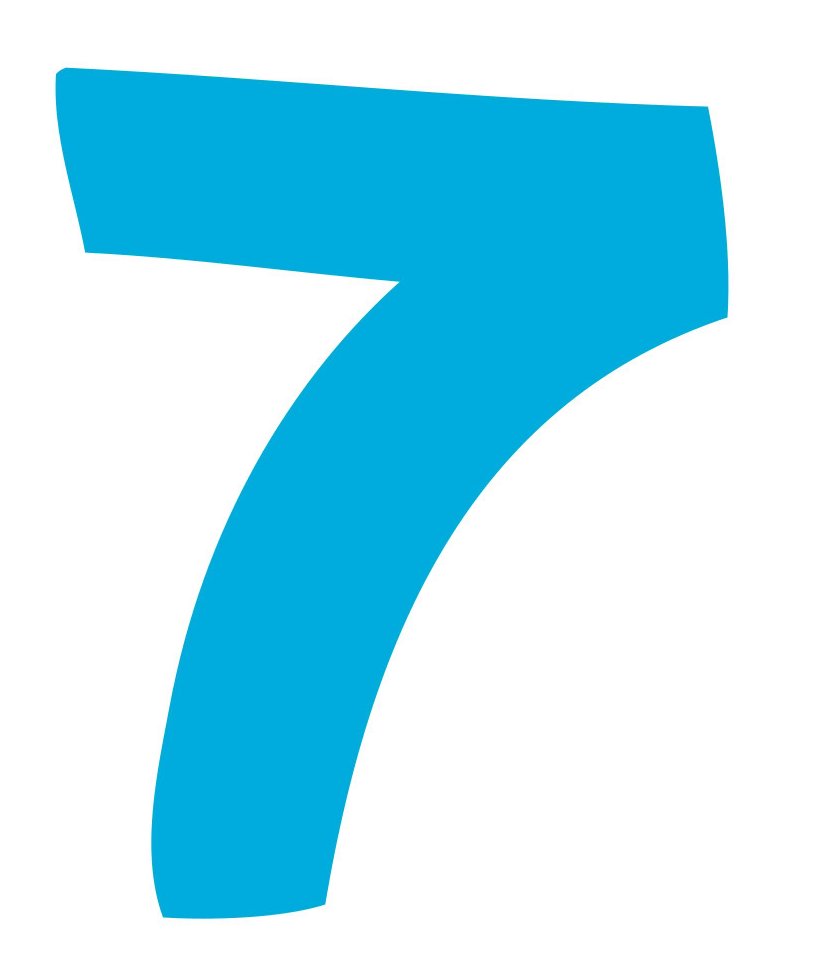
It’s ready ! Decorate your ice cream and other desserts to surprise your friends!

Understand the experiment

A liquid that gels
Agar-agar is responsible for gelation. This is why it is used a lot for cooking desserts. The agar-agar consists of two molecules mainly. Agarose and agaropectin. Huge molecules called polymers. In water, these molecules bond together to form a network also called a gel. Like a sponge, it retains water inside.

Why is the liquid adopt sphere shape?
When the drops of orange juice mixed with agar-agar fall into the oil, spheres form. The mixture that you have prepared consists mainly of water. And you know that water doesn’t mix with oil. These are two immiscible liquids. The sphere is the geometric volume which has the least contact surface with its external environment. So it’s natural for your drop of orange juice to gel in the form of a sphere to minimize contact with the oil.
Did you know?
Plastic made from algae
Agar-agar is a huge molecule produced by red algae (families of gelidiaceae and Gracilariaceae). Agar-agar belongs to the family of polysaccharides and may be called bioplastic. In addition, it is biodegradable. This means that it breaks down into very small non-toxic molecules within a few weeks thanks to the action of small fungi or water. Today, researchers are using agar-agar as a bioplastic to replace current plastics, which are not biodegradable and therefore polluting.

How did they discover the agar? A funny story.
It is by chance, as often in science, that the gelling power of agar-agar was discovered. History tells that in 1650 in Japan, Lord Daimyo had allowed his seaweed broth to cool outside. When he wanted to finish it, he found his broth frozen. It’s natural that he warmed his broth. But instead of a soup, he discovered a solid, translucent gel.
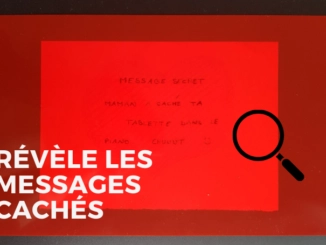
Decode messages with a red filter
Do you want to send secret messages to your friends, without anyone else being able to read it? Or even send a secret invitation to a lover? Play with light and color transmission to hide your messages. It’s your turn to play! […]

Prepare an orange caviar
Use molecular chemistry to create foods with unexpected shapes. Do you think making orange juice beads is impossible? This is without counting on the properties of Agar, a natural molecule capable of gelling all liquids. Transform yourself into a molecular chemist to surprise your friends with your edible creations. […]

The color decomposition of your markers
The primary colors are cyan, yellow and magenta. Three colors from which all others derive. One way to find out what the color of the felt-tip pens is made of is to play with water, a coffee filter and use the principle of capillary action. […]


